[caption id=“attachment_6689081” align=“alignright” width=“300”] 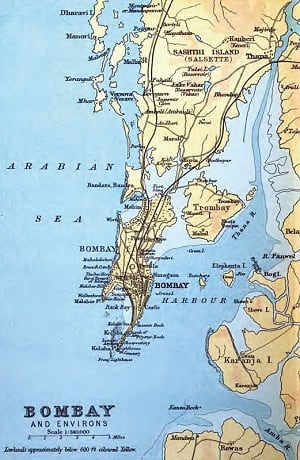 A physical map of Salsette Island in 1893. Source: Wikimedia Commons.[/caption] Mumbai and Thane, the sprawling megapolises, as we know of them today, have a local history of their own — of their geography, population and economics — that have greatly contributed in shaping the two cities to their present form. Along with Trombay, these two neighbouring cities form what is, or rather was known as the Salsette (or Sashthi for sixty-six) Island which is bounded by the Vasai Creek and the Ulhas River on the north; Thane Creek and Harbour Bay on the east, and the Arabian Sea on the south and west. The enclosure of the landmass by water bodies from all the sides made fishing one of the most popular and sustainable occupations for the inhabitants of these group of islands. One of the aboriginal communities of these islands, the Kolis, has been around for nearly 500 years. Over the years, the community (especially the Son Kolis) has often been considered synonymous to fishing in this area. Recently, a pop-up museum in Thane exhibited close to 140 photographs documenting the lives of the people from Thane’s Chendani Koliwada. The exhibition was put up by the Tandel Fund of Archives — a public art project and a pool of archives which aims to gather and document information of fishermen communities in and around Mumbai — founded by the artist couple Parag Kamal Kashinath Tandel and Kadambari Koli-Tandel. The photographs on display were captured by Late Shri Dattatraya Mahadeo Koli aka Diana (in the Son Koli community) of Chendani. Born in 1931, Dattatraya was a popular wedding photographer in the Koliwada and was known for his immense passion for the art of photography. From selfies, portraits, festivals, marriages, to political rallies, events, film stars and artists — he has documented glimpses of the then-developing Nehruvian era and its effects on the fishermen community. “Marriage photographers of my age aren’t doing anything like what he has done, they are just doing marriage photography and earning money. He was a passionate photographer. He was one of the first photographers from the community who started commercially but, along the way, also documented the Koliwada on various layers,” says Parag, who embarked upon this quest to explore his Koliwada and people through the lens of Dattatraya, who also happened to be one of his father’s close friends. [caption id=“attachment_6689181” align=“alignnone” width=“825”] 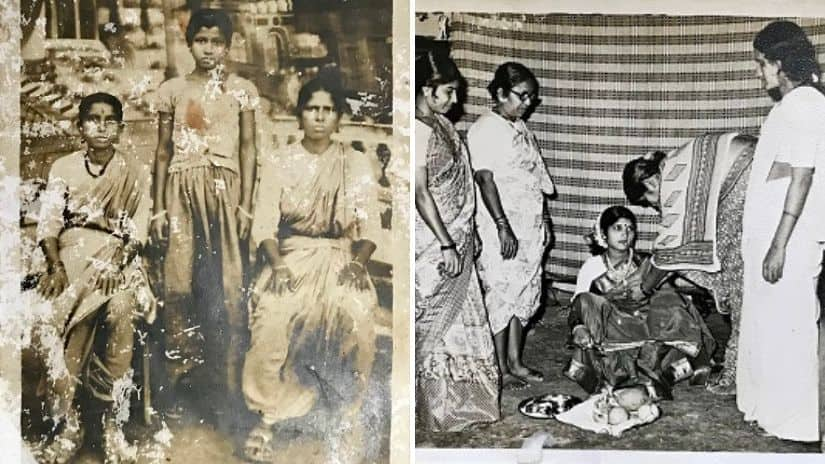 Women of the Chendani Koliwada have been treated equals from the start. They would do business together; while the men would go out and fish, the women would sell and do marketing.[/caption] “He used to call himself an ‘artist’ in 1953 when photographers were not even treated as artists. He had a stamp upon which the words ‘Artist and Photographer’ were embossed. That was very fascinating for me,” Parag recounts. He mentions a particular episode from Dattatraya’s initial days when the young photographer would resort to gambling at the racecourse just because he wanted to buy a camera. His widowed mother (also a fishseller) got so worried about her son’s chronic gambling that she decided to get him married. A 20-something Dattatraya made an arrangement — he placed a clause saying he would only marry if was gifted a Rolleicord camera. His mother, seeing this as a golden opportunity to get her son rid of the vicious game, got him his first camera. Dattatraya, however, continued gambling even after marriage as photography, that time, needed raw materials for printing and processing which would often cost a pretty penny. It was in his later years that he got a job in the Thane Municipal Corporation; he retired as a Gumasta (Shop Licence) Inspector. Parag informs that a lot of his other works — including many 2x2 slides — would be part of the second phase of this pop-up museum, which is tentative to kickoff around December this year. [caption id=“attachment_6689231” align=“alignleft” width=“380”] 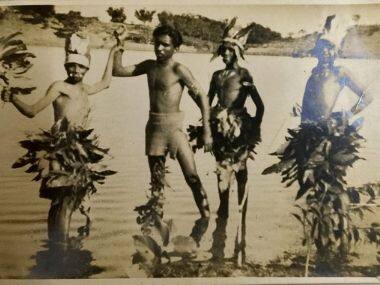 Fancy dress competition organised by Chendani Koliwada’s sports complex.[/caption] Why a museum on the Koli community? “The government will not make it for us, so I think these pop-up museums are a great idea,” Parag says. “Since the last few years, our community has been going through post-diaspora. The coastal road project and various efforts from the government to implement cluster projects here have raised a lot of apprehensions and insecurities within the community.” The lands of the Kolis are self-sustaining and are least dependent on the city’s infrastructure. They are placed in such a way that they are never water-logged while most of the city is. And, since they are sea-facing, they are seen as prime properties. “We see water every day, we like being close to water. There is a sense of attachment to this space. We fear all will be lost. If you put the Koliwadas from these sea fronts to places such as Ambernath or Dombivli, what will be left of our culture? Then, we will also have to celebrate festivals in order to keep our culture intact,” remarks Parag. There are more than 40 Koliwadas in and around Mumbai and each of them has its own distinct socio-cultural milieu. Thane’s Chendani Koliwada and its inhabitants have a rather unique journey of their own: unlike other Koli communities around, their prime occupation wasn’t fishing. The Chendani Kolis were traders, merchants, mariners and owned mercantile businesses. The reason behind this lay in the geography of the place. Parag explains, “I think this is the oldest historical port, even before the Bombay port was developed. Kalyan was a major port and later Thane was developed. Thane came from the word ‘than’ which meant a halt port. We used to ship goods from Kochi to the Gulf in places like Oman and Arabia. There used to be a huge presence of the Arabs, Omanis, Portuguese and later British in the Koliwada.” [caption id=“attachment_6689341” align=“alignnone” width=“825”]  Dattatraya was a good friend of Raj Kapoor. His varied perspective on photography was also believed to have developed at the RK Studios. In picture: Holi celebrations at RK Studios, Chembur, featuring Raj Kapoor, Shashi Kapoor, Randhir Kapoor and Shammi Kapoor.[/caption] This multicultural exchange also added to the culture and cuisine of the place. The Koli food platter got new flavours with the advent of tomatoes introduced by the Portuguese; spices as a result of their frequenting between Kochi and Thane; and assumably dry fish which the Omanis brought along to eat with rice. At the same time, it became important for the Koli traders to be well versed with foreign languages as well. “My grandfather used to speak fluent English. He had to learn because he had to deal with the British and the Portuguese almost daily. He used to travel from here to Oman and while coming back he used to smuggle things. He used to donate the money from that smuggling to the causes of the freedom fighters. He was part of the Dandi March and many other national movements that time,” says Parag and then adds how the first train journey between Thane and Bori Bunder on 16 April, 1853 changed the course of their lives manifold. [caption id=“attachment_6689271” align=“alignright” width=“380”] 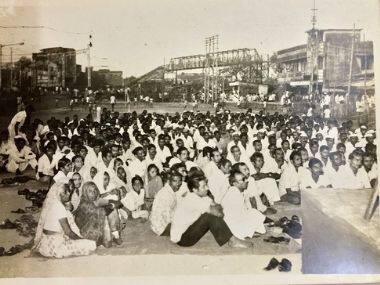 Thane Station (seen in the background) was actually in the centre of the Koliwada and divided it into two halves.[/caption] According to Parag, the 1853 train brought about a major shift in occupation in the Koli community. People got connected with Mumbai and everybody started working in mills and they got exposed to the metropolitan culture. Suddenly from a multi-trade community, the focus of their business narrowed down to only fishing. What is known today as the Tandel Fund of Archives (that organised the pop-up museum) is an extension of an age-old funding scheme of the same name that was started by Parag’s forefathers. “Those days, once the boat sailed off it returned after around seven months. There was no guarantee whether the boat would come back or not. But here, in the Koliwada, the situation would change in those seven months — their jewellery, property and even houses were kept as mortgages with the Marwadi merchants etc. Usually, the earnings of the fishing boat were divided into four parts — of the nakhwa (owner of the ship), the tandel (the captain), the koli (fishing and help with the ropes) and the khalashi (labourers of the ship). The tandels decided that a part of the earnings should be saved for the kolis so that once they come back after seven months, the financial crisis that cropped up meanwhile could be taken care of. Later, that money was settled internally.” Parag, who is a renowned artist with degrees from JJ School of Arts and MS University, Baroda, feels that with time the Koli youth, especially in the Chendani Koliwada, has deviated from their hereditary businesses to white-collar jobs despite the fact that the former is way more lucrative a profession than the latter. Their connection with the community and the Koliwada has also begun to fade gradually. “There are around 20 percent people from our community who are still into fishing as a primary occupation,” Parag says and continues, “But, the way our education system has been defined, we are educated from the get-go to become a workforce for somebody else. My mother sold fish, so did my dad. I know everything about it; I don’t have to learn it. So I can avoid being part of the workforce. If I weren’t an artist, I would have sold good dry fish. Unfortunately, the kids of today’s generation aren’t educated to continue their hereditary occupation. As much we are part of the society, we can’t avoid the effect of its conditioning.” [caption id=“attachment_6689431” align=“alignnone” width=“825”] 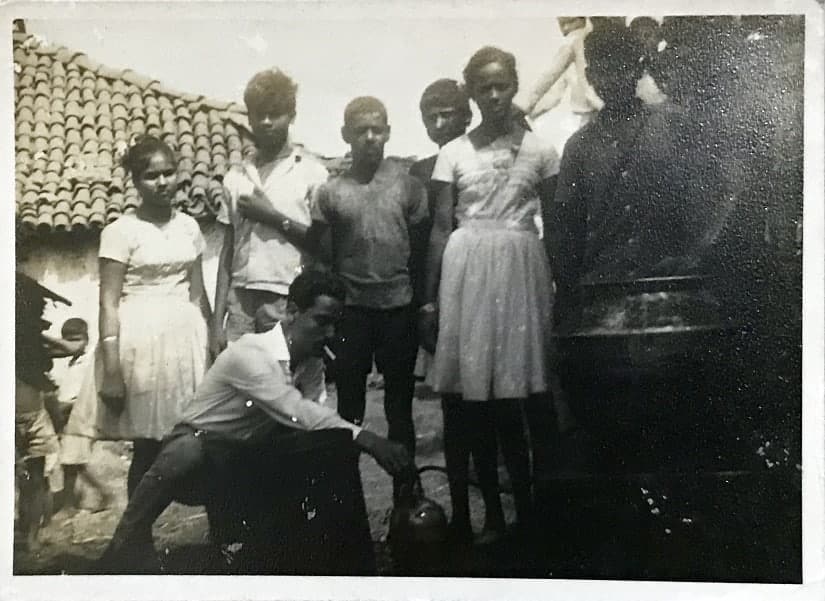 Preparations for a community dinner. The change in the attire also reflected the changing face of Nehruvian India.[/caption] All photographs by Late Shri Dattatray Mahadeo Thanekar (Diana)/ Tandel Fund of Archives The pop-up museum was open from 11 to 21 May at Khule Kaladalan, Thane East. For further updates on the museum and other projects under Tandel Fund of Archives, click here.
The exhibition was put up by the Tandel Fund of Archives — a public art project and a pool of archives which aims to gather and document information of the Son Koli communities in and around Mumbai
Advertisement
End of Article


)
)
)
)
)
)
)
)
)



